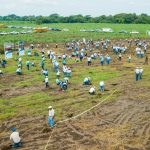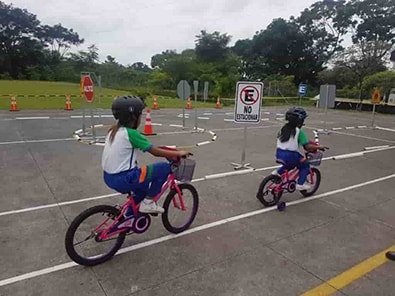Eleven sugar mills produce sugar in Guatemala, and all of them have implemented measures to reduce the use of water according to their capacity; enabling them to be more efficient and environmentally sustainable.
As part of its commitment to make a rational use of water, the Guatemalan Sugar Industry works along with communities, authorities and other water-users to coordinate the use of water in the main rivers of the South Coast, the area in which all of them operate. “We understand that water is a common good, and everyone is allowed to make a rational use of it” explained Luis Miguel Paiz, General Manager of the Guatemalan Sugar Producers Association – ASAZGUA-.
“As sugar producers, we are aware that the impact of climate change and other climate events, such as El Niño Southern Oscillation, affect the availability of water all around the world, therefore affecting big cities, communities and agricultural producers”, he added.
Water-saving practices:
- Sugarcane is a low-water-requiring crop:
About 20% of the sugarcane area is not irrigated, whereas the other 88% is mainly rain-fed and a small amount is irrigated. This means that each land-plot is being irrigated 2 to 3 times a month through mobile irrigation systems.
- Sugarcane that uses even less water
Scientists at the Guatemalan Center for Research and Training on Sugarcane (referred to by its Spanish acronym Cengicaña) have developed 21 new and improved sugarcane varieties by crossbreeding, which need less water and contain more sugar.
Sugar mills use high-technology programs that shows them exactly how much water each sugarcane land-plot needs, preventing the waste of water. Also, irrigation systems that imitate rainfall have been adopted.
Enterprises, authorities and communities all the way from Santa Rosa to Retalhuleu, have organized themselves to make a rational use of water, so the river flow reaches the sea.
By using a vibration system, some sugar mills avoid using water to wash sugarcane.
For thousands of years, human beings have used water to carry out agricultural activities. Nowadays in Guatemala, water from the rivers is used by communities, municipalities and agricultural producers. Sugar mills get the water from the rivers by using controlled water outlets without interrupting the river course.
Sugar mills are endowed with forest areas covering 12 thousand hectares. They additionally have planted over 4 million trees since 2011 for the adequate management of watersheds.
Water used by the sugar mills for the production of sugar is treated to be reused during the factory process, therefore saving water.
At the end of the sugar production process, residue waters are treated and later used to irrigate. Through this process, sugarcane producers comply with the Ministry of Environment and National Resources’ Regulation 236-2006, that legislates discharge and reutilization of waste waters.
Around 70% of sugarcane is water, and the Sugar Mills make use of it during the production process.
Water is an essential element to achieve sustainable development. The Guatemalan Sugar Industry is completely aligned with the United Nations’ Sustainable Development Goals, especially with the SDG 6, which looks to ensure water and sanitation for all.
“Adapting to climate variations is one of the greatest challenges we must face, therefore we are investing in technology and looking to adopt new sugarcane cultivation and sugar production practices that require less water. Every sugar mill is implementing actions according to its capacities”, explained Luis Miguel Paiz.

The Guatemalan Sugar Mills have cooling towers to lower the temperature of the water after it´s used at the factory and in that way it can be used again in the process of making sugar.

By using a vibration system, some sugar mills avoid using water to wash sugarcane.

Irrigation systems that imitate rainfall have been adopted to save water.












































